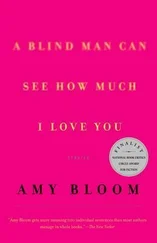The notion that gender has a continuum, a fluid range of possibilities, seems to produce such anxious rigidity in many of us that we ignore everything we’ve learned through our own lives about the complexities of men and women, and seek refuge in explanations and expectations of gender that are more magical, romantic, and unrealistic than any attitude I encountered among the transsexuals I met. Ever since Christine Jorgensen, there seems to have been a lot of confusion about what now, thanks to Louis Sullivan, seems so unconfused to Ira Pauly and others in the field. Male is not gay or straight; it’s male. We may not know what it is, but we know it’s not about whether male or female sexual stimuli inspire your erection. Maybe it’s not even about the ability or the equipment to have an erection. Maybe it’s closer to the sensation of inner arousal pushed out — a sense of erectness, of intact outerness — than to the source or object of one’s erotic desires. There are gay men, heterosexual men, bisexual men, masculine men, feminine men. We know that neither the object of desire nor the drinking of beer nor the clenching of fists makes maleness. We don’t know what does, and neither do the transsexual men, and neither do the people who treat them, psychologically and surgically.
I ask Dr. Pauly, who has expressed caution about the usefulness of transsexual surgery — and even more caution about those psychiatrists who wish to have the surgery declared a problem rather than a solution — if he would recommend surgery if he had a transsexual child.
“I would hope not to have a transsexual child; that life is no easy thing, with or without the surgery. I hope that the follow-up studies support the studies we have now. I hope these patients are happier.”
I press him.
“I would probably try to intervene early in childhood. But you know, those studies of strongly effeminate boys — a lot of them grow up to be gay, but they don’t grow up to be transsexual. You’re looking at five in a hundred for male homosexuals, one in fifty thousand for transsexuals.”
In the end, after edging up on saying that he would advise surgery if he had a transsexual child, Dr. Pauly shrugs and nods yes but doesn’t say it, and I stop. There is some kind of gift in having been in both a male and a female body in one lifetime, but it is not a gift anyone wants for their child.
At Don Laub’s surgical center in Palo Alto, I stand in the doorway of the waiting room, observing two women in the courtyard, wondering if they are “genetically female,” and wondering if I can bring myself to ask such a rude question. But if I believe, as I now find myself believing, that transsexual men and women are men and women, what would make the question rude? The implication that something tipped me off, that their femininity was imperfect, that there was some trace of the masculine in their appearance? I have been noticing traces of the imperfect, traces of the other gender in people, for two days now, ever since I met with Lyle and Jessie and with the guys at James’s condo.
The person on the side of the courtyard nearest me is blond, pretty, curvy, lightly made up in suitable-for-blonds colors. Conservative navy dress, white trim. Suntan hose and navy pumps. Could be, I think. Good makeup, but maybe just a bit stereotypically feminine, maybe a little overboard. She gestures to her companion forcefully, and I think, Ah, those hands. Very strong, even at a distance. I look at the companion. Thin and angular, in loose black pants and a loose black-and-ivory shirt. No visible curves at all. Reddish wavy hair gathered back tightly from a long, shining, intense, and makeupless face. But the narrowness of the forehead, the size and shape and prominence of the eyes. I don’t think so. And she laughs, showing her braces, and I think, Can’t be. This red-haired person, although not particularly feminine or womanly, is a genetic female.
I go into the courtyard, and the blond calls my name and introduces herself: Dr. Gail Lebovic, Dr. Laub’s associate. She introduces me to Selena, a visiting medical student. We sit in the courtyard a while longer, waiting for Don Laub, and I watch for tall, big-handed women, short, wide-hipped men with scraggly facial hair. A broad-shouldered, potbellied woman with a bad dye job comes through the courtyard, bandy-legged and squat. The cleaning lady. Genetic female. There’s a slim, wispy-mustached young man in the corridor. Sean, the new office worker. Genetic male.
We are joined by Dr. Laub, graying and clean-shaven, utterly conventional and conservative in a dark-suited, reptie way, except for eyes so brightly intense they seem silver rather than blue-gray. He went to Jesuit schools, has been married forever to the same woman, and has five children, one of whom is a microsurgeon in Vermont, and one a registered nurse. He is also the founder of Interplast, a charitable organization that sends plastic surgeons to poor countries to provide free corrective surgery for children and adults. As of this writing, Laub’s center has done 798 female-to-male surgeries, most performed by Laub himself before he retired in 2001. Of that number, two female-to-male transsexuals asked to have their phalloplasties reversed and to return to female bodies. Although both reported that they were happy in their lives as men, they had become born-again Christians, and had been advised that their sex change surgeries were not God’s will.
Don Laub and Gail Lebovic show me some photograph albums of their female-to-male patients — dozens of head shots, before, during, and after hormone treatments. It begins to seem to me that what we take as the immutable biological fact of our existence is, after all, largely hormonal and unnervingly fluid. Many of the pictures of the same patient at various stages of his transformation look like family portraits — younger, middle, and eldest brother. The faces broaden; the foreheads slope forward and down more roughly to the eyebrows from receding hairlines; the necks and shoulders widen. Strength training is recommended for female-to-male transsexuals, to deal with the weight gain, but many of the men in the photographs are somewhere between stocky and fat. A few of them are handsome, more than a few are attractive, most are average. One guy looks like Don Ho, another looks like Don Knotts, another like Richard Gere. Some are homely, with bad skin, bad haircuts, cheap eyeglasses and overwashed shirts, ugly mustaches, pouchy eyes, jowly necks. But no one in his right mind would take them for women.
Lebovic clears her throat and shows me the other pictures. I’ve seen them before, the pictures Don Laub sent me of phalloplasties and metoidioplasties; I flipped through them at home and tried to study them, but they were black-and-white photocopies. The originals are in brutal, Polaroid-type color, in which brown skin has a dappled, froglike quality, and white skin has the sheen and color of bad pork.
Lebovic occasionally points out items of interest. “See, with this surgery”—the phalloplasty—“we keep the clitoris. Here, underneath, just above the scrotum, so when the penis is either rubbing against it or pulled out of the way, there’s full sexual response. Isn’t that great? We make the scrotum with the labia, by inserting skin expanders, just a little bit, week by week. After the skin has expanded, we insert the testicular implants, stitch it up the middle a bit, to create the look. Otherwise you just have one big ball, like this. Picture a small deflated balloon — that’s the expander. We put one in each labium, sew the labia together, and expand each compartment so it’s just like testicles. Then we put in the implants, just silicone balls.”
She describes the painful electrolysis of the abdominal area (all hair must be removed from the skin that will be used to make the phallus), and then the surgery. Two vertical incisions are made, three inches apart, stopping short of the navel. The surgeon lifts up the skin and soft tissue while it’s still attached at the ends, and rolls it up lengthwise into a tube. This inside-out tube is covered with a skin graft from the hip. The soft, skin-covered tube is still attached in two places, at the navel and the bikini line, and will be left that way, a pulsing hot dog growing on the abdominal field, for at least three months, so that it will develop its own blood supply. The second stage requires detaching the tube at the navel end and allowing the newly developed phallus to drop down. Function, of course, in the form of urination and ejaculation, is another matter. Urination through the phallus can be arranged, but the production and ejaculation of sperm is not yet possible.
Читать дальше












